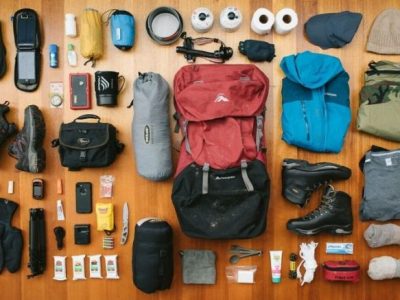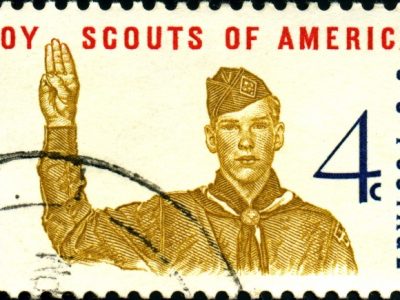Embark on a captivating journey into the world of sculpture with our comprehensive guide to Sculpture Merit Badge techniques. This definitive resource unveils the secrets of sculpting, empowering you to transform your artistic vision into tangible masterpieces.
From the fundamental principles of design to the intricacies of advanced techniques, this guide provides a thorough exploration of the sculptor’s craft. Whether you’re a novice or a seasoned artist, prepare to elevate your skills and create sculptures that leave a lasting impression.
Sculpture Merit Badge Techniques
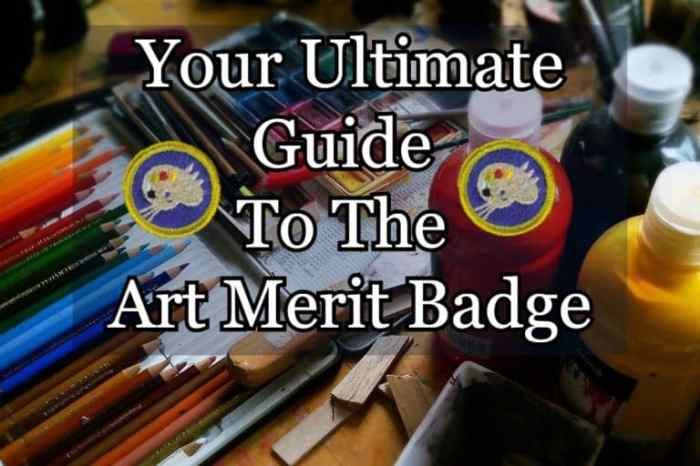
Introduction
Sculpture is a form of art that involves creating three-dimensional objects. It is a significant aspect of art and culture, as it allows artists to express their creativity and ideas in a tangible way. The Sculpture Merit Badge program is designed to introduce Scouts to the basics of sculpture, including the different techniques and materials used in this art form.
Materials and Tools
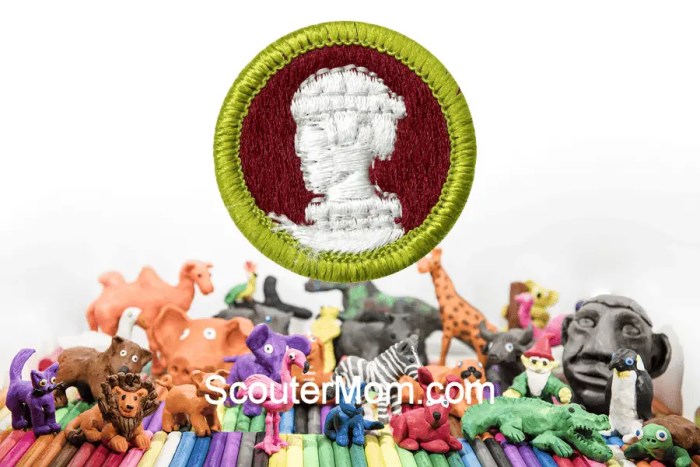
Sculpture involves shaping and manipulating various materials to create three-dimensional forms. The choice of materials and tools is crucial in determining the outcome and aesthetics of the artwork.
Materials
- Clay:A versatile material that can be molded and shaped easily. It comes in different types, including earthenware, stoneware, and porcelain, each with unique properties.
- Stone:A durable and timeless material that can be carved or chiseled into intricate forms. Common types include marble, granite, and sandstone.
- Metal:A strong and malleable material that can be cast, welded, or hammered into desired shapes. Common metals used in sculpture include bronze, steel, and aluminum.
- Wood:A natural and organic material that can be carved, turned, or assembled into sculptures. Common types include oak, walnut, and maple.
Tools
The selection of tools depends on the material being used. Essential tools include:
- Chisels and Hammers:Used for carving and shaping stone.
- Knives and Gouges:Used for carving and shaping wood.
- Modeling Tools:Used for shaping and smoothing clay.
- Casting Equipment:Used for creating metal sculptures.
Understanding the properties of different materials and selecting the appropriate tools is essential for successful sculpture.
Basic Sculpture Techniques
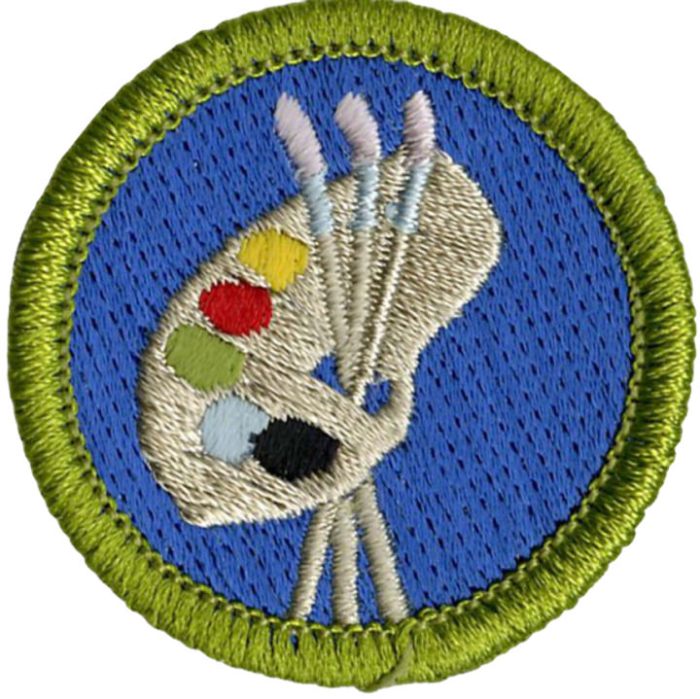
Sculpture is an art form that involves creating three-dimensional works of art. There are many different sculpture techniques that can be used to create a variety of different effects. Some of the most common sculpture techniques include modeling, carving, casting, and welding.
Modeling
Modeling is a sculpture technique that involves shaping a material, such as clay or wax, by hand. Modeling can be used to create a variety of different forms, from simple shapes to complex figures.To model a sculpture, the artist first starts with a block of material.
The artist then uses their hands and tools to shape the material into the desired form. Modeling can be a very time-consuming process, but it allows the artist to create very detailed and expressive sculptures.
Carving
Carving is a sculpture technique that involves removing material from a block of wood, stone, or other material. Carving can be used to create a variety of different forms, from simple shapes to complex figures.To carve a sculpture, the artist first selects a block of material.
The artist then uses a variety of tools, such as chisels and gouges, to remove material from the block. Carving can be a very difficult and time-consuming process, but it allows the artist to create very precise and detailed sculptures.
Casting
Casting is a sculpture technique that involves pouring a liquid material, such as plaster or bronze, into a mold. The mold is then removed, leaving behind a solid sculpture. Casting can be used to create a variety of different forms, from simple shapes to complex figures.To
cast a sculpture, the artist first creates a mold of the desired form. The mold is then filled with a liquid material. The liquid material is allowed to harden, and the mold is then removed. Casting can be a very versatile technique, and it allows the artist to create sculptures that would be difficult or impossible to create using other techniques.
Welding, Sculpture merit badge techniques
Welding is a sculpture technique that involves joining two pieces of metal together using heat. Welding can be used to create a variety of different forms, from simple shapes to complex figures.To weld a sculpture, the artist first cuts two pieces of metal to the desired shape.
The artist then uses a welding torch to heat the edges of the metal. The metal is then joined together, and the weld is allowed to cool. Welding can be a very strong and durable technique, and it allows the artist to create sculptures that would be difficult or impossible to create using other techniques.
Advanced Sculpture Techniques
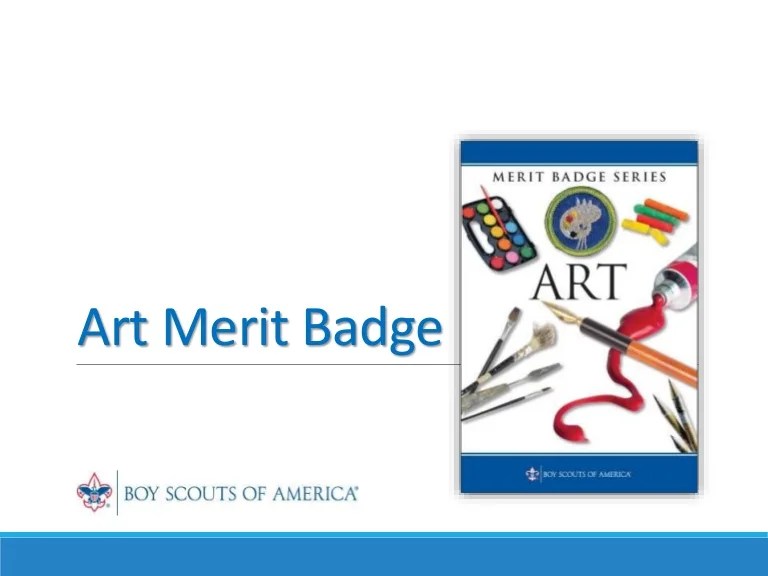
Beyond the fundamental techniques, advanced sculpture methods explore unconventional approaches to creating three-dimensional works.
Assemblage
Assemblage involves combining disparate objects and materials into a cohesive sculpture. Artists like Robert Rauschenberg and Kurt Schwitters pioneered this technique, using found objects, discarded items, and industrial materials to create thought-provoking works.
Installation
Installation art transforms entire spaces or environments into immersive experiences. Installations often incorporate a variety of media, such as sculpture, sound, light, and interactive elements. Olafur Eliasson’s “The Weather Project” and Yayoi Kusama’s “Infinity Mirrors” are renowned examples.
Performance Art
Performance art incorporates the artist’s body and actions as the primary medium. Performances can be ephemeral, existing only during the event, or documented through photography, video, or other means. Marina Abramović and Chris Burden are influential figures in performance art.
Design Principles and Elements
Design principles and elements are essential considerations for creating effective sculptures. These guidelines help artists organize and manipulate the visual elements of their work to convey ideas, emotions, and narratives.
Key design principles include:
- Balance:Distributing visual weight evenly to create stability and harmony.
- Contrast:Juxtaposing different elements, such as light and dark, to create visual interest.
- Emphasis:Drawing attention to a focal point or element.
- Proportion:Establishing relationships between the sizes and scales of different elements.
- Rhythm:Creating a sense of movement or flow through repetition or variation.
Design elements include:
- Form:The three-dimensional shape of the sculpture.
- Line:The path created by the edges of the sculpture.
- Texture:The surface quality of the sculpture.
- Color:The hues and shades used in the sculpture.
- Space:The area around and within the sculpture.
Understanding and applying these principles and elements enables sculptors to create visually appealing and meaningful works of art.
Examples of Design Principles and Elements in Sculpture
Michelangelo’s “David” exemplifies balance and proportion, with its symmetrical pose and harmonious distribution of mass. Donatello’s “St. George” demonstrates contrast through the juxtaposition of the saint’s idealized form with the grotesque dragon. Bernini’s “Ecstasy of St. Teresa” uses rhythm to create a sense of movement and energy.
Sculpture in Different Cultures
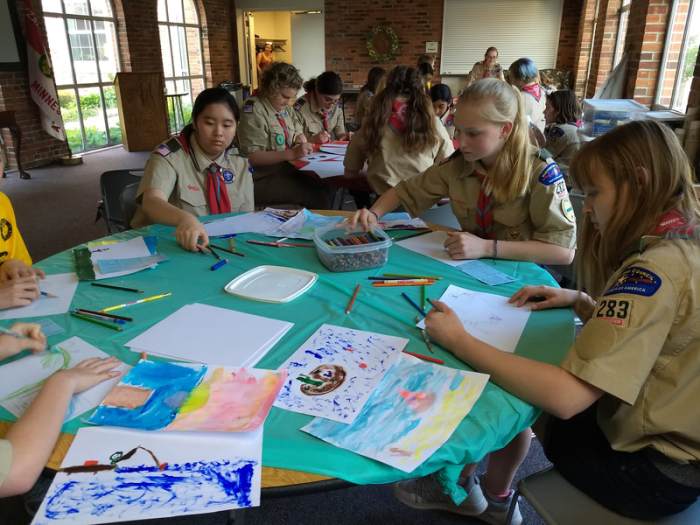
Sculpture has been an integral part of human cultures throughout history, serving diverse purposes and embodying unique artistic expressions. The cultural context in which a sculpture is created significantly influences its form, function, and meaning.
Religious Significance
In many cultures, sculpture has played a central role in religious practices. Ancient Egyptian sculptures depicted deities and pharaohs, embodying divine power and immortalizing their legacy. Buddhist sculptures in Southeast Asia often represent the Buddha or bodhisattvas, serving as objects of devotion and inspiration.
Political Symbolism
Sculpture has also been used to convey political messages and assert authority. Roman triumphal arches and equestrian statues celebrated military victories and glorified emperors. In modern times, sculptures such as the Statue of Liberty have become symbols of national identity and freedom.
Cultural Heritage
Sculptures can preserve and transmit cultural heritage. Traditional African masks, for example, embody the spirits and beliefs of specific tribes. Maori wood carvings in New Zealand depict ancestral figures and mythological stories, connecting the present with the past.
Aesthetic Expression
Beyond its functional roles, sculpture has been a medium for pure aesthetic expression. Greek and Roman sculptures idealized human beauty and form, while modern abstract sculptures explore non-representational concepts and evoke emotional responses.
Cross-Cultural Influences
Cultural exchange and interaction have influenced the development of sculpture across cultures. For instance, Greek sculpture influenced Roman art, and Buddhist sculptures from India spread throughout Asia. Contemporary sculptures often blend elements from diverse cultural traditions, creating new and hybrid forms.
Contemporary Sculpture Trends
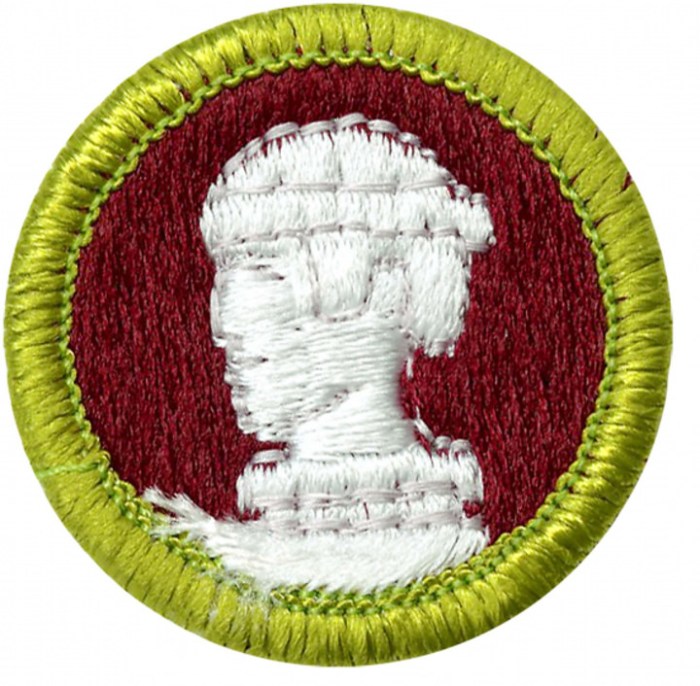
Contemporary sculpture encompasses a diverse range of artistic practices and expressions that challenge traditional notions of form and materials. It is characterized by a departure from representationalism, an emphasis on abstraction, and an exploration of new technologies and concepts.
Influences on Contemporary Sculpture
Contemporary sculpture is influenced by various factors, including advancements in technology, globalization, and social and environmental issues. Artists are embracing digital tools, such as 3D printing and computer-aided design, to create complex and innovative forms. Globalization has facilitated the exchange of ideas and techniques across cultures, leading to a cross-pollination of artistic styles and influences.
Key Trends in Contemporary Sculpture
- Digital Fabrication:The use of 3D printing, laser cutting, and other digital fabrication techniques allows artists to explore intricate and organic forms that were previously impossible to create.
- Interactive and Kinetic Sculpture:Contemporary sculptures often incorporate interactive elements that engage viewers through movement, sound, or light. Kinetic sculptures utilize motors or other mechanisms to create dynamic and responsive artworks.
- Sustainability and Environmentalism:Many contemporary sculptors are addressing environmental issues through their work, using recycled materials and exploring sustainable practices in their art-making.
- Site-Specific and Environmental Sculpture:Artists are increasingly creating sculptures that are specifically designed for a particular location or environment, often responding to the natural or cultural surroundings.
- Performance and Installation Art:Contemporary sculpture often incorporates elements of performance and installation art, blurring the boundaries between different artistic disciplines.
Examples of Contemporary Sculptures
- “The Bean” by Anish Kapoor:A reflective stainless steel sculpture in Chicago’s Millennium Park, known for its distorted and mirrored surface.
- “Cloud Gate” by Antony Gormley:A massive steel sculpture in London’s Olympic Park, consisting of interconnected spheres that create a labyrinthine interior.
- “The Kiss” by Jaume Plensa:A large-scale sculpture in Barcelona made from cast iron, depicting a couple embracing.
- “The Knife Angel” by Alfie Bradley:A 27-foot-tall sculpture made from 100,000 knives confiscated from UK streets, symbolizing the fight against violence and knife crime.
- “The Floating Piers” by Christo and Jeanne-Claude:A temporary installation consisting of 100,000 saffron-colored cubes that created a floating walkway on Italy’s Lake Iseo.
End of Discussion
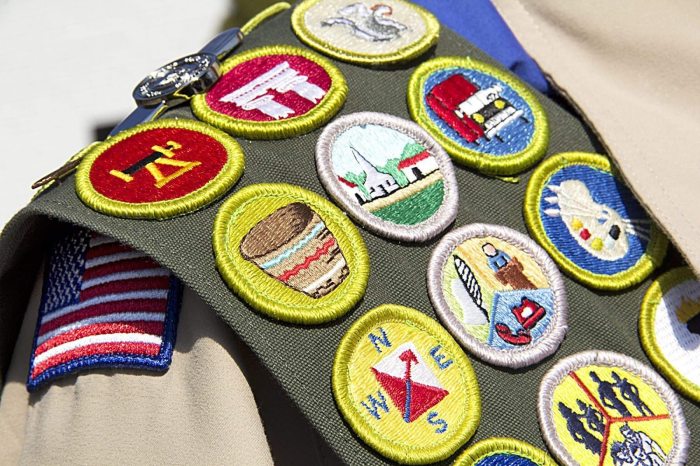
As you delve into the realm of sculpture, remember that the true essence of this art form lies in the ability to translate your imagination into physical form. Embrace the challenges, experiment with diverse materials and techniques, and let your creativity soar.
With dedication and passion, you will unlock the boundless possibilities of sculpture and create works of art that captivate and inspire.
FAQ Compilation: Sculpture Merit Badge Techniques
What are the essential tools for sculpture?
The essential tools for sculpture include chisels, hammers, gouges, rasps, files, and various other specialized tools depending on the material being worked with.
What are the basic sculpture techniques?
The basic sculpture techniques include modeling, carving, casting, and welding. Modeling involves shaping a material by hand, carving involves removing material to create a form, casting involves creating a mold and pouring molten material into it, and welding involves joining pieces of metal together.
What are some advanced sculpture techniques?
Some advanced sculpture techniques include assemblage, installation, and performance art. Assemblage involves combining found objects into a sculpture, installation involves creating a sculpture that interacts with its surroundings, and performance art involves using the body as a medium for artistic expression.

